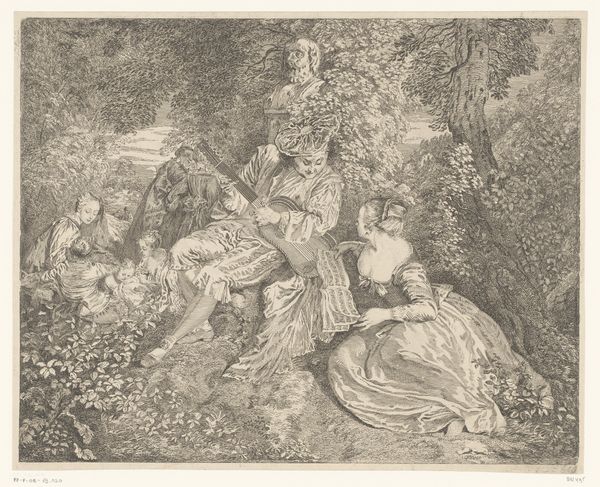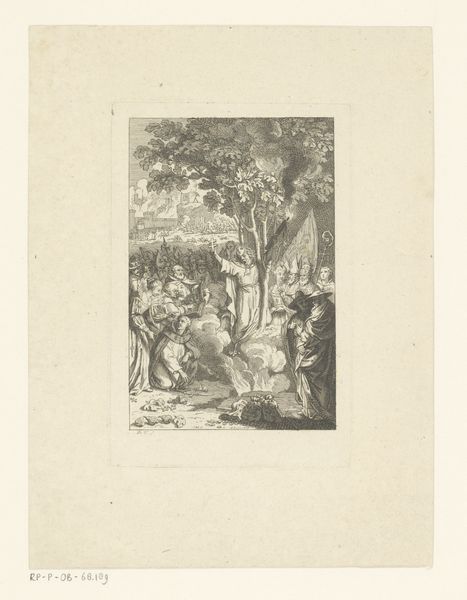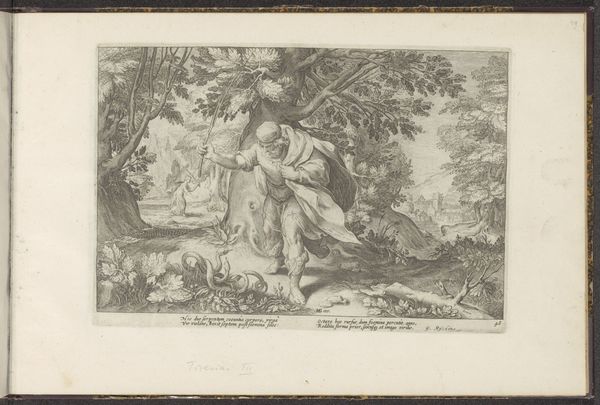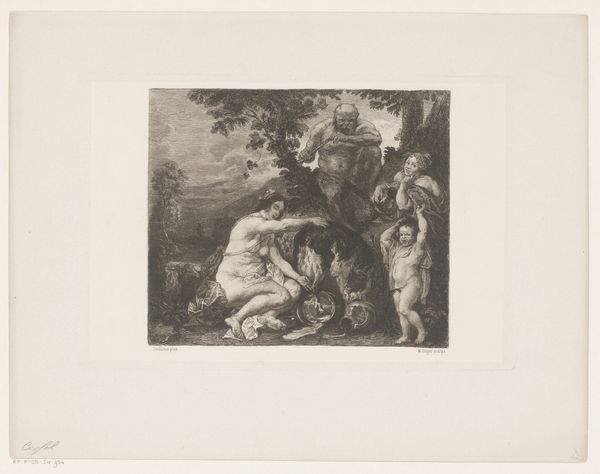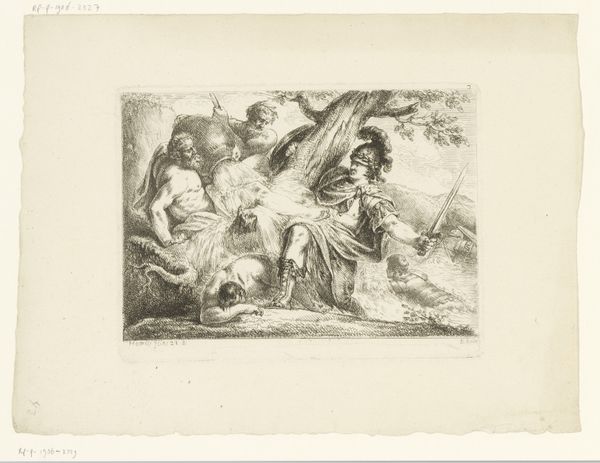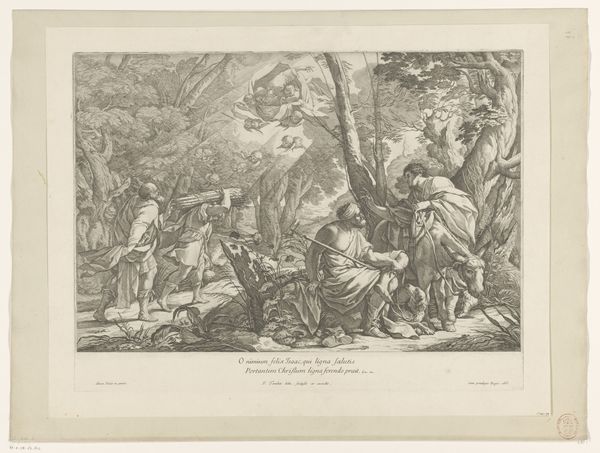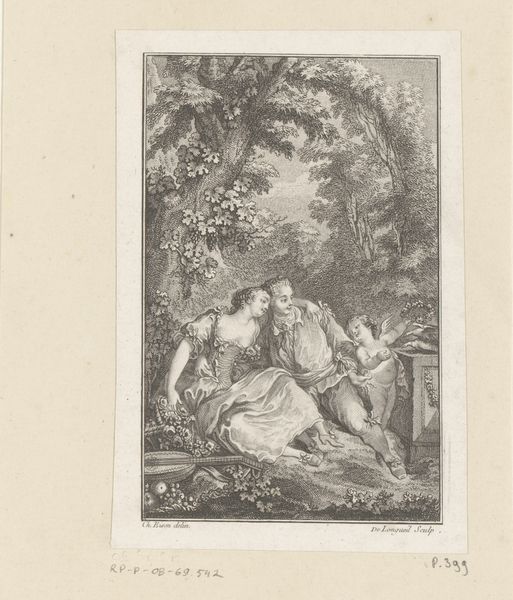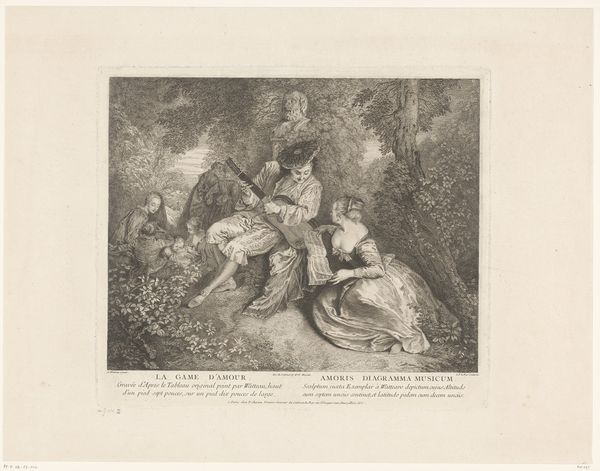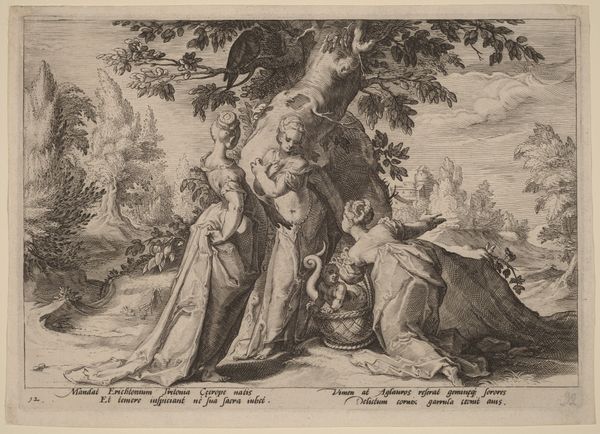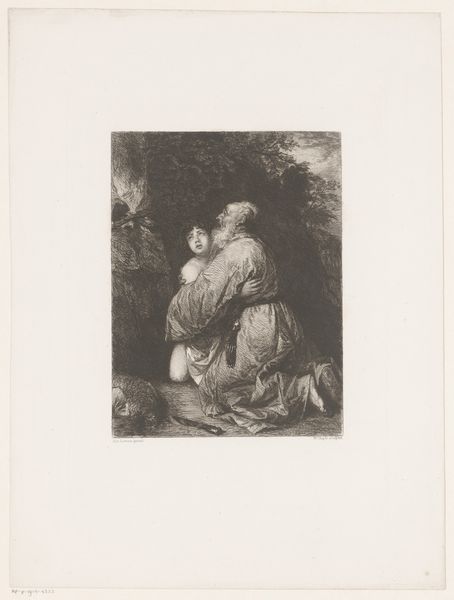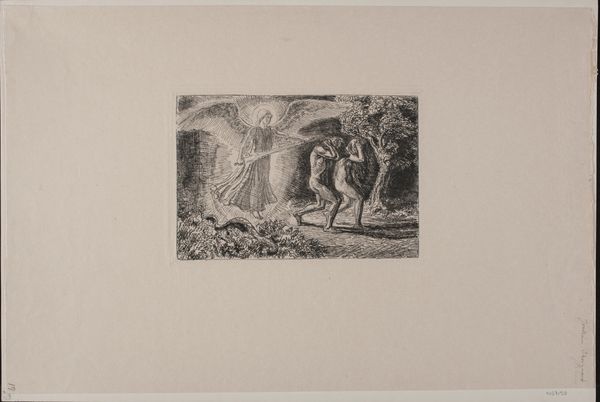
drawing, print, paper, ink, engraving
#
drawing
#
baroque
#
ink paper printed
# print
#
old engraving style
#
landscape
#
figuration
#
paper
#
ink
#
pen-ink sketch
#
sketchbook drawing
#
history-painting
#
engraving
Dimensions: height 218 mm, width 264 mm
Copyright: Rijks Museum: Open Domain
Editor: This is a pen and ink drawing titled "Rest on the Flight into Egypt," dating roughly from 1556 to 1629, artist unknown. It has this peaceful, almost secretive quality. What do you see in this piece beyond the obvious depiction of a biblical scene? Curator: This work presents an opportunity to think about the narratives we construct around power, particularly through religious iconography. How do we reconcile the image of a vulnerable family in flight with the immense power that the story ascribes to them? Notice, too, how the landscape envelops them. This isn't just a backdrop; it's an active participant in their narrative. Where might they find refuge? And who is denied refuge based on intersectional bias, fear and the social structures around it? Editor: That's a great point. The landscape does feel very protective, almost like a character. It makes me wonder about the historical context, especially regarding refugees and displacement. Were there specific socio-political factors influencing the artist’s choices? Curator: Absolutely. During this period, Europe saw its fair share of religious and political upheavals, causing widespread displacement. The Holy Family's flight into Egypt resonates deeply with the experiences of marginalized communities seeking asylum. Can we consider this artwork a commentary on forced migration and resilience? How might the imagery, and our access to the imagery, be a form of activism? Editor: So, you're suggesting it's not just a religious scene, but also a powerful statement about the struggles faced by refugees throughout history? It’s thought-provoking how art from centuries ago can still spark conversations about contemporary issues. Curator: Precisely. It invites us to examine the ways in which artistic expression can serve as a catalyst for social change and challenge dominant power structures. It seems relevant in our world today, doesn't it? Editor: Definitely. I'll never look at depictions of the Holy Family the same way. Curator: And I am reminded about the deep value of intersectionality in our cultural expression and reflection.
Comments
No comments
Be the first to comment and join the conversation on the ultimate creative platform.
